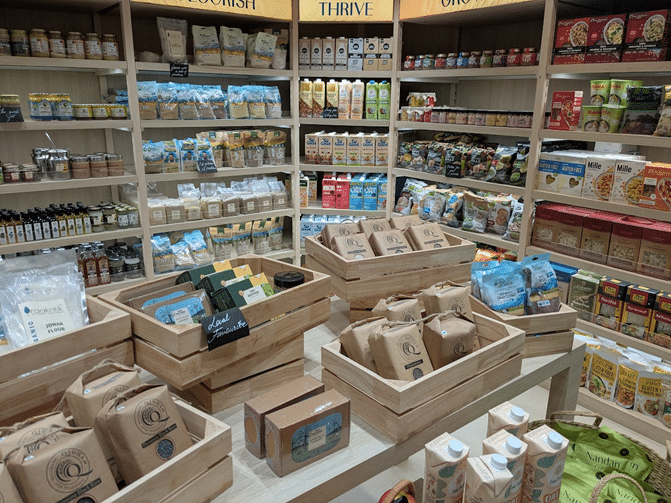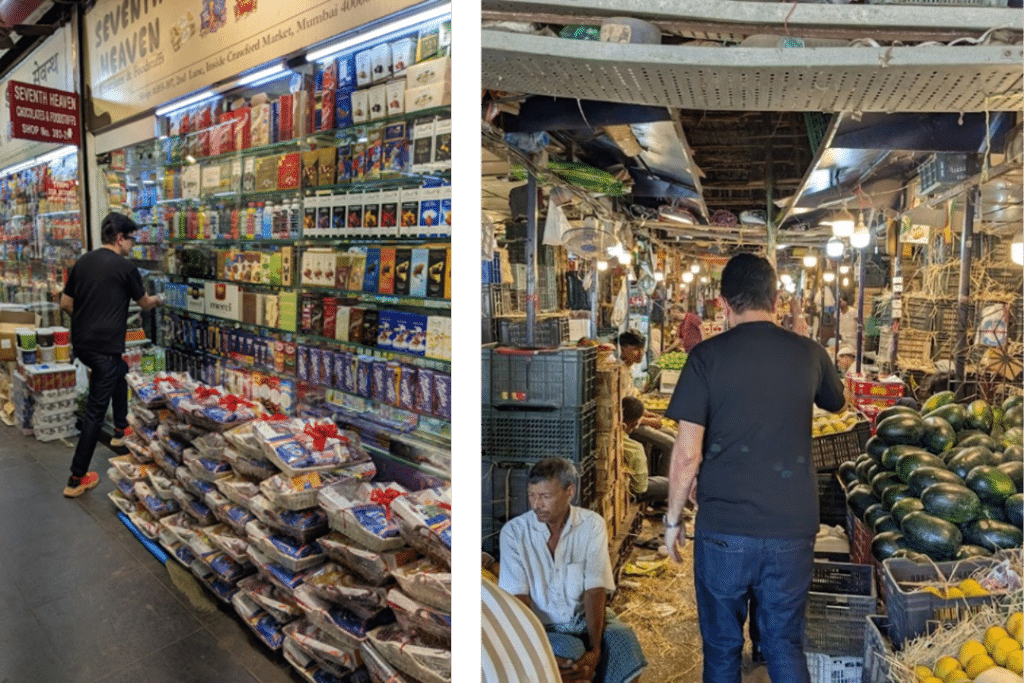Three Brief Reflections on India
Dear Food Export Community,
This month, I traveled to India to speak at Food Export organized seminars in Mumbai, Bengaluru, and New Delhi. Each was designed to build business contacts and gather market intelligence for U.S. exporters. Our audiences included importers, distributors, retailers, and chefs, all eager to engage with international suppliers and products. What I found in India was not just a promising market, but a universe whose complexities and contradictions challenge traditional assumptions while inviting fresh thinking.
To prepare for the trip, I read The Argumentative Indian by Nobel laureate Amartya Sen, a brilliant primer for anyone trying to wrap their head around India. Sen’s central thesis is that India is best understood through its millennia-old tradition of negotiation and pluralism in public settings. This insight proved invaluable. In a continent of its density and heterogeneity, contradiction is not a bug but a feature. That realization became the thread connecting three reflections I brought home with me.
India is often introduced to outsiders by its challenges: poverty, bureaucracy, food safety risks, gender dynamics, border tensions, and a business culture that can be both aggressively direct and surprisingly indirect. Some of these were on full display during my visit, including news of a major tragedy in the Kashmir region while I was in transit. Yet amid these difficulties, India’s energy was unmistakable.
In Mumbai’s high-end retail spaces, I was struck by how even the most upscale consumers were still laser focused on value. But in India, “value” doesn’t always mean low price. One retailer described it as “premium functionality,” imported products that deliver on taste, health, and versatility. Smaller pack sizes, family friendly labeling, and easy to prepare formats all matter. For a nation of 1.4 billion, with a middle class expected to reach 700 million by decade’s end, segmentation isn’t a barrier. It’s the strategy.
India’s demographics underscore this opportunity. More than 600 million Indians are between the ages of 18 and 25. These young consumers are not just digitally native; they’re aspirational, brand aware, and increasingly health conscious. Many are seeking premium and imported food products, and they are willing to pay for quality. U.S. exports of almonds, cranberries, apples, dairy, and frozen poultry have all benefited from this shift.
If an exporter asked me whether India is worth it, I’d say this: it’s not a sugar high or a quick win. But for those willing to commit logistically, strategically, and promotionally, the returns are real and lasting. India is a when question, not an if.
The most striking paradox of the trip was the effortless coexistence of modernity and tradition. I witnessed this firsthand when a dinner companion ordered a Washington apple from a “q-commerce” app. We were in a hotel lobby and walking to a restaurant inside the same building. Before we even sat down, the apple arrived, spotless, fresh, and delivered in under five minutes.
4-minute video on Q-Commerce in India:
Later that week, I visited Mumbai’s historic Crawford Market. I’ve been to wet markets all over the world, but Crawford was the most sophisticated. Chocolatiers had air-conditioned stalls. Imported goods were sold next to local produce. According to importers I met, up to 80% of their business still happens in informal, traditional channels—spaces that operate in the gray zones that still define much of Indian retail.
This juxtaposition, instant delivery apps and 19th-century bazaars, doesn’t reflect a country in transition. It reflects a country confident enough to house contradictions. As Sen writes, India’s ability to embrace multiple truths is core to its civilization.


India’s food retail sector is now a $660 billion industry, still dominated by 15 million “kirana” shops, small neighborhood groceries, but increasingly shaped by rapid e-commerce growth. Quick commerce platforms like Zepto and Blinkit handled 67% of online grocery orders in 2024, and this segment is expected to grow over 40% annually through 2030.
For U.S. exporters, this means approaching India as both a fragmented and integrated market. One product might succeed in a gourmet mall in Bengaluru and a corner stall in Delhi—but for completely different reasons. And that has real marketing implications. Your product might be discovered through a five-star app or a neighborhood stall, but it needs to resonate clearly in both formats. Storytelling, packaging, and positioning must be tailored to multiple retail realities—all at once. And it isn’t going to work all of the time, everywhere.
“India is not for the faint of heart,” said one of the importers at breakfast, about 10 hours after I landed in the country. “It hasn’t hit you yet.” One moment I was shoulder to shoulder with shoppers in Crawford Market, the next I was 40 floors above it in the sleek confines of the St. Regis Mall, only to see the same jar of U.S. peanut butter sold in both places, albeit with a very different price tag.
To navigate India, I found that curiosity and humility were my best tools. Indians are fiercely proud of their home and deeply aware of its challenges. They don’t need you to point them out. What they appreciate is an earnest effort to understand the opportunity, not just critique the problem. While solo travel may appeal to some, I cannot overstate the importance of in-market partners. You need allies to get it right. I must thank our in-market team and their partnership with the Forum of Indian Food Importers for making this trip successful and eye-opening.
There are structural hurdles, too. India’s authorities continue to update import requirements. In 2024 alone, new health certificates were required for dairy and meat imports, and foreign manufacturing sites in certain categories now must register with Indian authorities. Tariffs remain high and subject to change, and complex rules add cost and time. But here, too, there is forward motion.
In 2023, India removed tariffs on U.S. almonds, apples, walnuts, lentils, and chickpeas. It also reduced duties on pecans, blueberries, cranberries, and even frozen turkey and duck, expanding access for U.S. suppliers. U.S. agricultural exports to India totaled approximately $2.5 billion in FY2022, and while India is still a modest share of overall exports, it represents one of the clearest growth stories ahead. We should be excited (the Indian market certainly is) about the ongoing trade talks: Indian shares log weekly gains on ceasefire with Pakistan, US deal hopes | Reuters
Small businesses often face the steepest learning curves abroad. But India is a market where agility is a competitive advantage, and that could favor smaller firms. The U.S. and India continue to deepen their trade dialogue, and every step toward simplification makes the path easier for smaller firms.
One lesson stood out above the rest: the chaos is a feature, not a bug. You cannot run a 1.4-billion-person democracy without debate, contradiction, and a healthy relationship with the marketplace of ideas. That’s why marketing can thrive there, but only for companies ready to engage in ongoing dialogue with the consumer. You can’t just parachute in. India requires penetration, presence, patience, and persistence.
India reminded me of something simple but powerful: economic markets aren’t only math problems. They’re living systems. You can’t spreadsheet your way into success there. You need curiosity, partners, adaptability, and a strategy that makes space for contradiction.
India is full of possibility. And for those willing to embrace it—argumentative, chaotic, brilliant—it might just be the future. And that’s where Food Export shines: not by eliminating the complexity, but by making it navigable.
Brendan Wilson
CEO, Food Export-Midwest & Food Export-Northeast
Your Input Matters: If there is a topic you wish for me to discuss in this space, let me know. You can reach me at info@foodexport.org. Just put Attn: Brendan Wilson in the subject line.
Your Connection To Growth®
©2025 Food Export Association of the Midwest USA and Food Export USA–Northeast. All Rights Reserved.
Food Export–Midwest and Food Export–Northeast prohibits discrimination in all its programs and activities on the basis of race, color, national origin, religion, sex, gender identity (including gender expression), sexual orientation, disability, age, marital status, familial/parental status, income derived from a public assistance program, political beliefs, reprisal or retaliation for prior civil rights activity. (Not all bases apply to all programs.) Persons with disabilities who require reasonable accommodations or alternative means of communication for program information (e.g., Braille, large print, audiotape, American Sign Language, etc.) should contact us. Additionally, program information may be made available in languages other than English.
To file a program discrimination complaint, complete the USDA Program Discrimination Complaint Form, AD-3027, found online https://www.ascr.usda.gov/filing-program-discrimination-complaint-usda-customer.
Food Export–Midwest and Food Export–Northeast reserve the right to deny services to any firm or individual which, in the sole opinion of Food Export–Midwest and Food Export–Northeast, does not comply with FAS, MAP or Food Export–Midwest and Food Export–Northeast regulations or policies, or otherwise offer the best opportunity to achieve its mission of increasing food and agricultural exports. Submission of any false or misleading information may be grounds for rejection or subsequent revocation of any application or participation. Food Export–Midwest and Food Export–Northeast are equal opportunity employers and providers.
